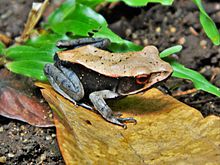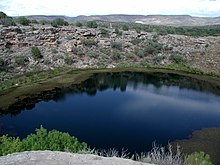
Back Endemie (ekologie) Afrikaans Endemismo AN توطن Arabic Endemismu AST Endemik Azerbaijani Эндэмізм Byelorussian স্থানিকতা Bengali/Bangla Brosezadezh Breton Endem BS Endemisme Catalan



Endemism is the state of a species only being found in a single defined geographic location, such as an island, state, nation, country or other defined zone; organisms that are indigenous to a place are not endemic to it if they are also found elsewhere.[1] For example, the Cape sugarbird is found exclusively in southwestern South Africa and is therefore said to be endemic to that particular part of the world.[2] An endemic species can also be referred to as an endemism or, in scientific literature, as an endemite.[citation needed]
The extreme opposite of an endemic species is one with a cosmopolitan distribution, having a global or widespread range.[1]
A rare alternative term for a species that is endemic is "precinctive", which applies to species (and other taxonomic levels) that are restricted to a defined geographical area.[3] Other terms that sometimes are used interchangeably, but less often, include autochthonal, autochthonic, and indigenous, however, these terms do not reflect the status of a species that specifically belongs only to a determined place.
- ^ a b Morrone, Juan J. (2008). Encyclopedia of Ecology. Vol. 3 (2 ed.). Elsevier. pp. 81–86. doi:10.1016/B978-0-444-63768-0.00786-1.
- ^ Riley, Adam (13 December 2011). "South Africa's endemic birds". 10,000 Birds. Adam Riley. Archived from the original on 27 November 2020. Retrieved 9 December 2020.
- ^ Encyclopedia of Entomology. Dordrecht: Springer. 2004. doi:10.1007/0-306-48380-7_3391. ISBN 978-0-306-48380-6.